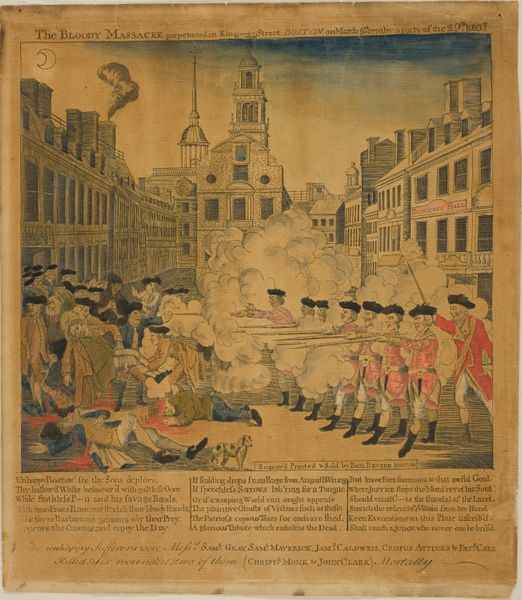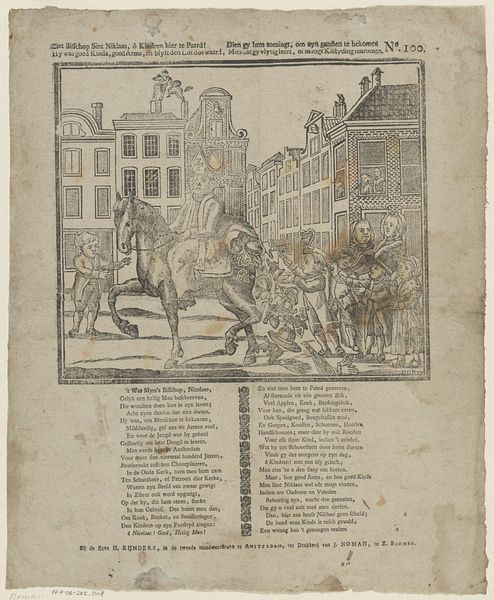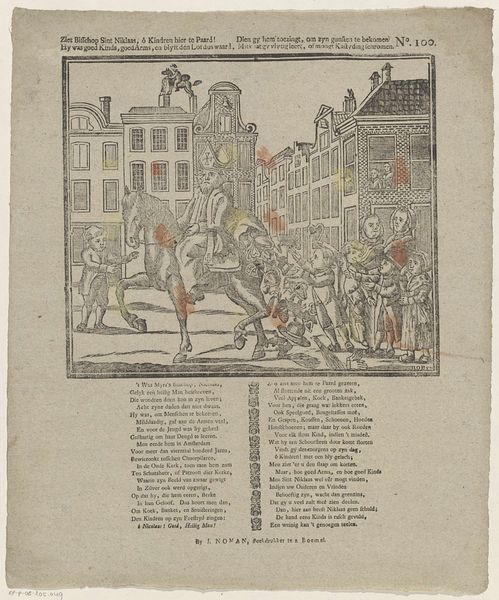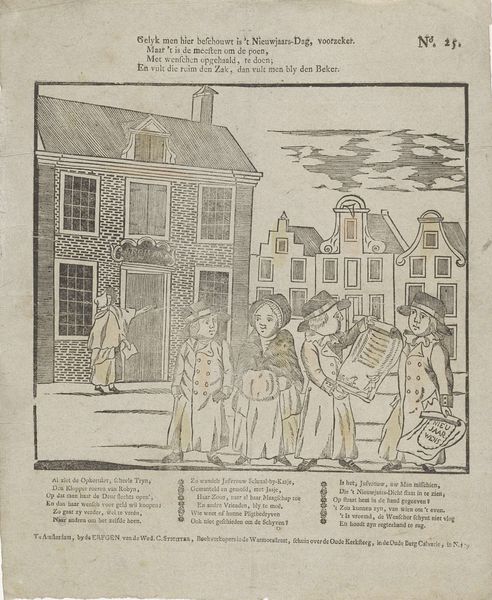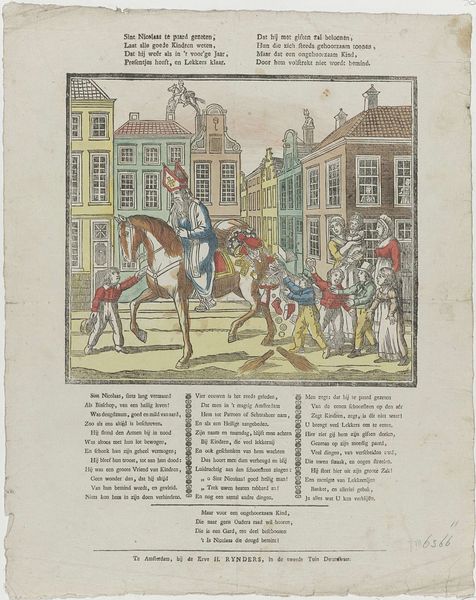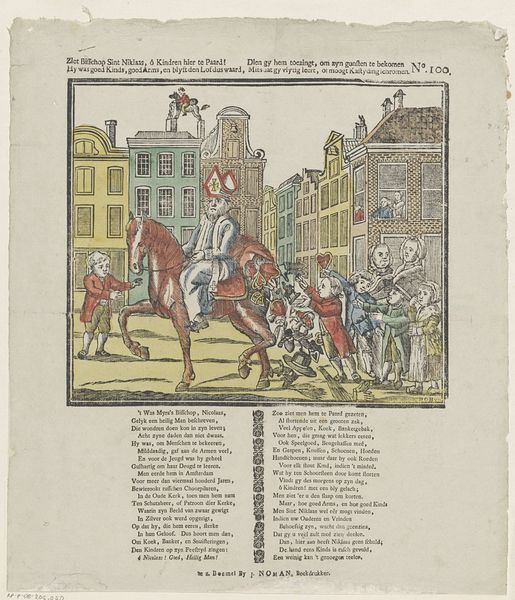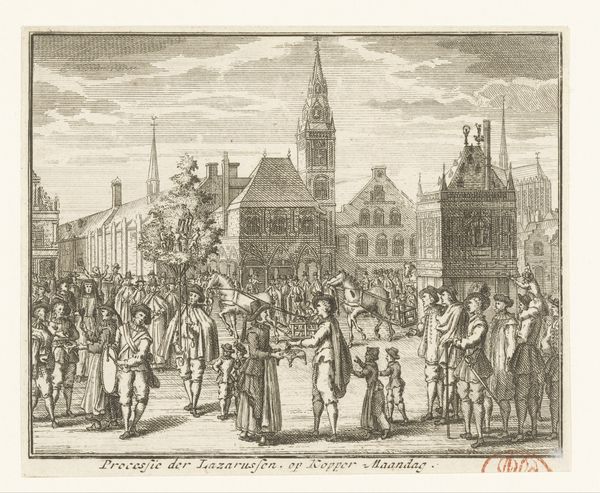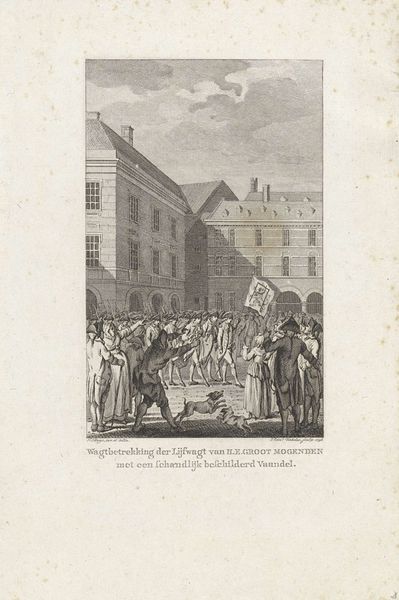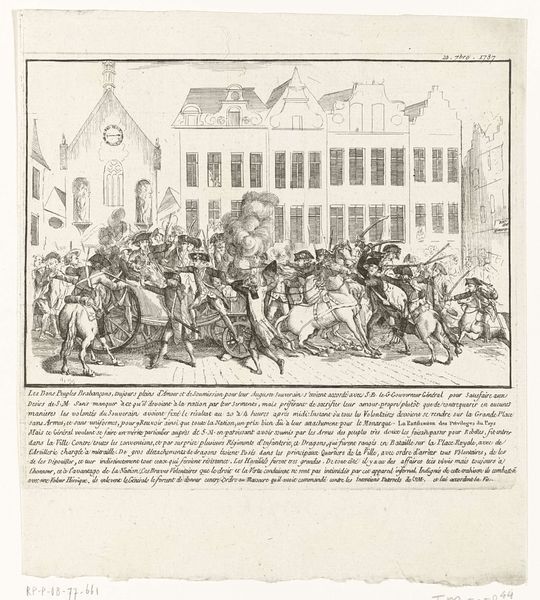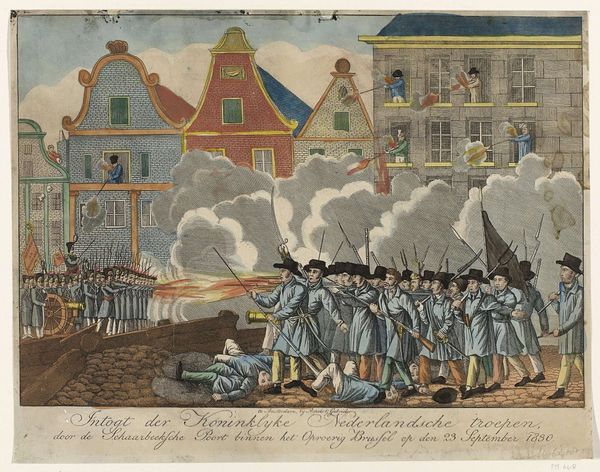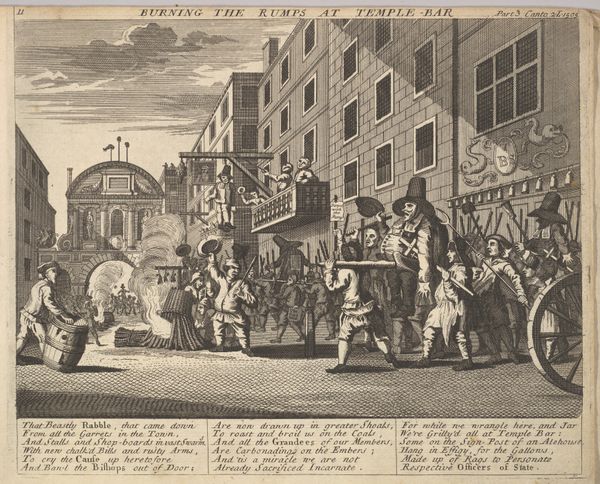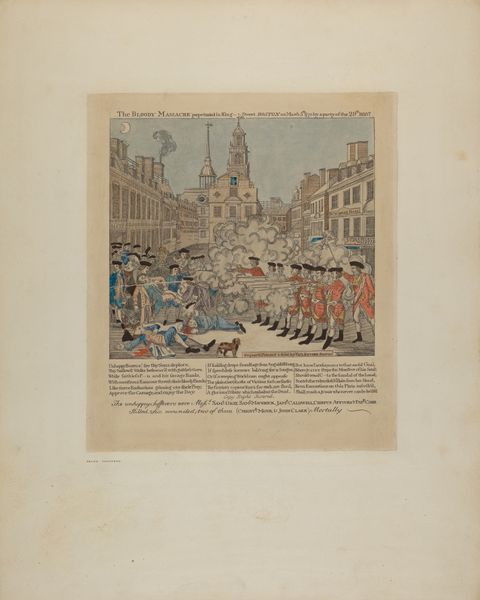
print, paper, ink, engraving
#
narrative-art
#
ink painting
# print
#
figuration
#
paper
#
text
#
ink
#
line
#
cityscape
#
watercolour illustration
#
history-painting
#
engraving
#
watercolor
Copyright: Public domain
Editor: This is "The Bloody Massacre in King-Street, March 5, 1770," a print made by Paul Revere. The strong reds jump out, really highlighting the violence, while the almost cartoonish figures add an odd disconnect. What do you see in this piece beyond just the historical narrative? Curator: Precisely. Let us focus on the intrinsic qualities of this print. Notice the stark linearity that defines the architecture and the figures. The formal repetition of the redcoats and their rifles creates a sense of rigid order juxtaposed against the chaotic disarray of the fallen colonists. Editor: I hadn’t noticed that rigidity. What about the use of light and shadow? They seem quite flat, almost… symbolic. Curator: Indeed. Observe how Revere eschews traditional shading in favor of stark tonal contrasts. The limited palette directs our gaze, emphasizing the symbolic weight of the figures, especially those highlighted in the foreground. The formal flatness arguably enhances the emotional impact rather than detracting from it. Editor: I guess focusing on form rather than realism does heighten the drama. What do you make of the text integrated into the image itself? Curator: A crucial element! The text functions as both description and editorial. Formally, the lettering echoes the linearity seen elsewhere, but more importantly, it explicitly interprets the event for the viewer. The print manipulates the viewer's reaction not just through visual cues, but textual ones, all combining to create a cohesive propagandistic artwork. Editor: So, the formal choices amplify the intended meaning, rather than simply illustrating a scene? Curator: Precisely. By examining the composition, color, and line work, we uncover the deliberate construction of meaning within this seemingly straightforward historical print. It reveals how visual choices inherently embody ideological viewpoints. Editor: That’s a great insight! I’ll never look at historical prints the same way again.
Comments
No comments
Be the first to comment and join the conversation on the ultimate creative platform.
